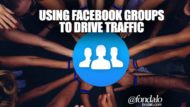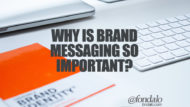Many large brands deploy strategic and integrated multi-channel marketing campaigns designed to get their message out to their target audience. Certain components of these marketing programs also include separate elements that help maintain their product and service message, value proposition and brand positioning with existing customers or generally within an industry. Along with these tactics, enterprise brands also leverage demand generation (demand gen) techniques to improve long-term results.
Demand generation is made up of content marketing activities that are designed to create interest, demand or validation for a specific product or service. Though most enterprise brands are generating content which promotes their specific brand or product, few are strategically building demand outside of their internal brand marketing using sophisticated tactics. Brands that are executing demand gen efforts along with their other lead generation and content marketing efforts can see dramatically improved results.
High-Level Demand Generation In Action:
Let’s take Microsoft and their Windows 10 roll-out as a simple example. Well before Windows 10 was actually launched, Microsoft embarked on a highly strategic demand generation campaign that continues today. The strategy they deployed slowly built recognition around the operating system and its new features and benefits, then slowly migrated toward launch date discussions that added further detail about the impending roll-out. Next there was content galore that highlighted the massive numbers of users that were upgrading, immediately followed by (and continuing today) about how easy the process was, the few problems users experienced and how much people are happy with the new OS.
Now that you have read this brief synopsis of what Microsoft executed, you are likely recalling all of these various stages, the content you saw (or read) surrounding the release, etc. You are also probably seeing how the Microsoft strategy built demand slowly and strategically, then climaxed with users still on older versions feeling more comfortable with upgrading, establishing demand for many remaining distrustful Windows users to go ahead and follow the crowd. Though the product itself may not be without flaws, the demand gen campaign that launched it was nearly flawless.
What you may not know about this example is that though Microsoft was generating their own product and brand content during this demand gen campaign, they had outside professionals that were also writing and posting content to support the overall desired effect. They used external professionals and their sources, trusted industry leaders, journalists and sites to generate content and subsequent demand over the term of the campaign. This goes well beyond content marketing, influencer marketing and content creation that most companies traditionally deploy.
How To Execute Effective Demand Generation
For most SMB’s or local companies, utilizing high-level demand generation marketing strategies isn’t practical due to the complexities and costs associated with designing and managing them. But for most big, enterprise or funded startup brands with the resources to strategically build demand for pre and post launch products there are tremendous benefits. Whether it’s for a B2B, B2C, product or service brand, many organizations hire experienced agencies and professionals to partner with them to design, coordinate and execute this type of sophisticated demand gen program.
Typically a demand generation program will be implemented in strategic phases that build over the course of the campaign. In each of the phases, the agency and brand marketing departments each have specific roles in the content creation process. While one is doing their part, the other is generating and distributing multi-channel content that facilitates their role. These campaigns often run over multiple months, then continue over a longer period to supplement the brands content and inbound marketing and lead generation programs.
Though there are significantly more details, steps and processes involved, but let’s quickly cover a few of the phases that make up this kind of sophisticated demand gen campaign that would be executed by the external professionals, in conjunction with the brand.
Phase 1 – In the early phase of the campaign, content will be regularly generated, published and distributed across multiple sites and platforms by the agency. All content being created will use available industry data and statistics that is NOT from the brand itself. The created content will focus on defining the problems that the target audience has and overtime begin to loosely frame a probable solution.
Phase 2 – In phase two of the demand generation campaign, the outside professionals continue regularly creating content that now uses and sites specific data, studies and reports from the brand itself. The content would now specifically sight, link to and promote data and statistics generated by the brand, their studies and reports. Though research from the brand will be sighted and linked to, no specific brand promotion of any product or service would be done.
*Sometimes white papers or other non-traditional marketing content can be offered in phase 2.
Phase 3 – The third phase would be considered the roll-out phase where the demand generated earlier shifts to focus more on a specific product of the organization commissioning the campaign. At this point, the multi-channel content being created would not only promote the specific product or service, but this new content would also link out to previous blogs, articles, videos and other content that had been created during phases one and two. This provides additional validation for the solution being provided and adds support to the value proposition being put forward by the brands marketing message.
Phase 4 – In the final phase of our example demand gen campaign, customer testimonials would be published in various forms that further validate the new product, it’s marketing message and the fit within the marketplace. Phase four content would also include influencer and sponsored content that is designed to show early adoption and result in other prospects following.
Demand gen programs of this type are designed to tell stories using data. It’s about third parties defining and validating problems that your target market has while creating demand, generating traffic, leads and revenue as well as solidifying branding and market position early. Multi-channel content like blogs, articles, video and graphics are created outside of the brand itself and distributed through numerous social media and other channels.
Developing and executing a high-level campaign is extremely complex, which utilizes multi-channel marketing disciplines at the same time for a specific unique intent. Being effective requires that large, enterprise brands and startups to be extremely strategic with their planning well before the anticipated launch. Partnering with the right professionals that have the experience, connections and ability to coordinate with your brand is crucial to the campaign’s success.







You’ve done a great job defining the roadmap for a succesful campaign but this article also validates the importance of content in today’s marketing arena. It’s often difficult to get team members to understand why the marketing team needs so much content. This is a great resource for helping them see the big picture. Thanks for sharing!
Thank you Josh. So glad it was helpful